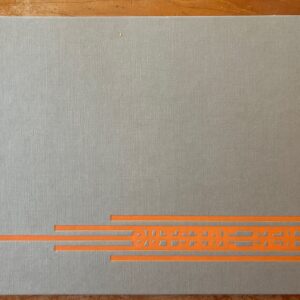JTF (just the facts): A total of 11 color photographs, framed in white and unmatted, and hung against white walls in the front and back gallery spaces. All of the works are c-prints on aluminum, made between 2014 and 2016. The prints range in size from roughly 23×18 inches to 56×44 inches (or reverse) and are available in editions of 3. The show also includes 1 single channel color video with sound, made in 2006; it is displayed in the lower level gallery space. Its duration is 8:06 minutes and it is available in edition of 5+1AP. A monograph of this body of work (entitled Confabulations) was published in 2016 by MACK Books (here). (Installation shots below.)
Comments/Context: Over the past two decades, the Norwegian photographer Torbjørn Rødland has done something a surprisingly small number of contemporary photographers have successfully accomplished. Using a straight photography approach, with some indebtedness to the slick surfaces and arrangements of commercial photography but without the notable aid of digital manipulations, he has developed an instantly recognizable aesthetic style.
The primary reason that a Rødland still life or nude sticks out from across the room is that his images always seem to find a pulsing vein of dissonance. His pictures are infused with a consistent sense of transgressive uncertainty – something is going on that seems decidely off-kilter, and that subtle deviance confronts the viewer with the feeling that the familiar has deliberately gone astray. Each image feels like an exercise in finding that exact point where the assumed (given the visual clues we have been provided) becomes the unsettled.
The best of the still lifes in this recent sampler show all cross this invisible line of conventional appropriateness. A black microphone drips and drools strange goo onto a delicate pile of lace. A shiny green apple turns out to be made of hard enamel. A striped piggy bank lies broken in a tumult of dusty ceramic shards, with three hooks quietly intruding into the composition. And a perfect criss-cross pattern of chocolate eclairs is interrupted by a bite taken out of one of the pastries, with a quietly shocking row of loosened teeth left behind.
When Rødland turns his attention to the nude form, or introduces female models into his scenes and settings, his pictures explore the edges of behavior, where ostensible innocence seeps toward knowing seduction and overt soft core eroticism. The show’s title is drawn from an image called First Abduction Attempt, which recreates a scene with a resisting woman being forcibly pulled through a doorway. Such a moment would not normally be remotely sexy (in fact, it would be frightening), but Rødland bathes the model in pure light and pulls her pants down to expose more skin, twisting the scene into a different kind of fetishistic voyeurism. The same can be said for the way female hands grip the sharp edges of a pair of figure skates, or the way a nude bottom settles down on the pointy slats of a section of picket fence. Each picture tests (and perhaps violates) our expectations, inserting a jolt of knowing impropriety where it usually isn’t found.
An early video work (from 2006) on view in the lower-level gallery shows where many of these aesthetic ideas found their exploratory roots. The central figure in the oblique story is a young woman in a trenchcoat, who alternately wanders through a park, awkwardly trudges through deep snow in the forest, and sits beneath the dappled colored light of turning disco ball, all the while telling deadpan jokes that aren’t funny. These scenes are intermingled with momentary diversions of slithering carp in a lake, ducklings prancing in the shallow water, and up close details of the coat and the woman’s small gestures (breathing, shaking her hands etc.). What comes through most clearly is a sense of hyper attention, where Rødland’s observations and misplaced jokes are allowed to sink in, to the point that they start to become just a bit unsettling.
It is not easy to make pictures that are consistently strange without falling into the trap of the blandly surreal, and this is where Rødland’s originality lies. There is a physicality to his photographs, both those with human bodies and those without, that grounds us in a version of reality that we can recognize, which the artist then proceeds to incisively undermine. It is this twist that generates that satisfying discomfort that accompanies so many of his images, and generates the vitality and tingling electricity that keeps us looking.
Collector’s POV: The photographs in this show are priced at $10000, $12000, or $22000, based on size. While Rødland’s prints have begun to make appearances in the secondary market, there have not been enough outcomes to chart much of a price history, so gallery retail likely remains the best option for those collectors interested in following up.















